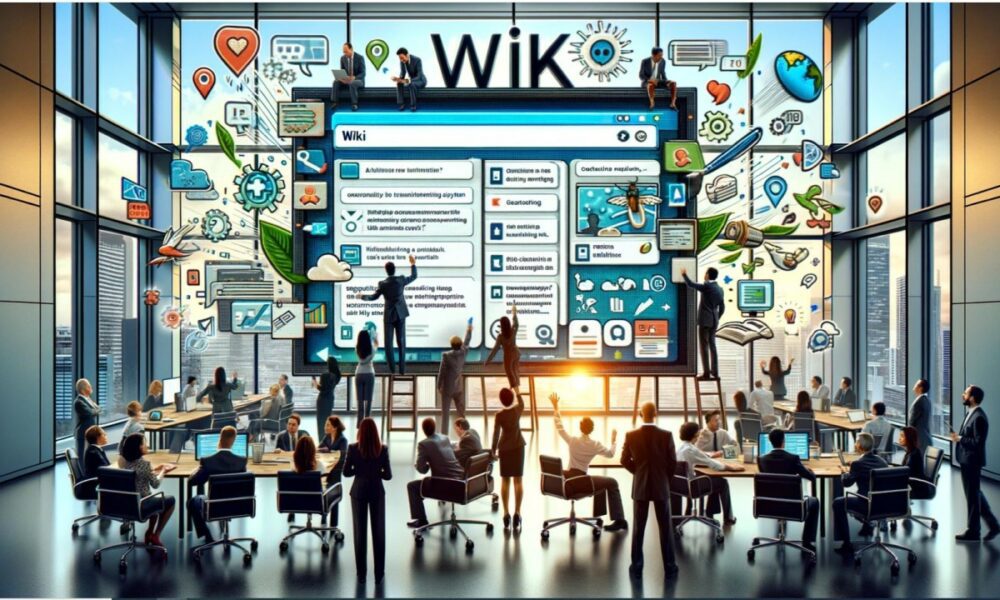KM Uncovered: From Intranet Functions to Wiki Applications

Introduction
In today’s fast-paced business environment, managing knowledge effectively has become a critical factor for organizational success. One common question that often arises is what is intranet and how does it fit into the realm of knowledge management (KM)? Additionally, wikis are another form of KM tool that can enhance collaboration and knowledge sharing within a company. In this blog post, we will delve into the world of KM, exploring the role of intranets and wikis in facilitating knowledge sharing and organizational growth.
Understanding KM and Its Importance
KM encompasses the practices of capturing, organizing, and distributing knowledge across an organization. It’s pivotal for enhancing decision-making, fostering innovation, and increasing efficiency. By effectively managing both tacit and explicit knowledge, along with best practices, organizations can better leverage their intellectual assets. This process supports continuous improvement and helps businesses maintain a competitive edge by making the most of their collective expertise and insights.
Intranet as a KM Tool: More Than Just an Internal Network
Intranets redefine the landscape of knowledge management by providing a private and secure environment where employees can engage, share, and discover vital organizational knowledge. Beyond serving as a mere repository for documents and policies, intranets facilitate seamless collaboration among team members, regardless of their physical location. They enable real-time communication, which is crucial for aligning team objectives and accelerating the decision-making process. With intranets, businesses can create an interconnected ecosystem that enhances accessibility to information, ensuring that every employee is equipped with the knowledge they need to excel in their roles. This dynamic platform fosters a culture of continuous learning and improvement, pivotal for organizational advancement.
The Role of Wikis in Enhancing Organizational Knowledge
Wikis represent an innovative approach to capturing and disseminating organizational wisdom. As user-generated, collaborative platforms, they invite employees to actively participate in the creation and refinement of knowledge. This democratized way of content management encourages a culture of shared responsibility for organizational learning. By simplifying the process of updating and maintaining accurate, relevant content, wikis make it easy for everyone within the organization to access up-to-date information and best practices. This interactive environment not only boosts engagement but also ensures a dynamic repository of institutional knowledge, critical for ongoing organizational development.
Integrating Intranets and Wikis into a Cohesive KM Strategy
To harness the full power of KM, it’s imperative to integrate intranets and wikis strategically. Intranets act as the backbone for centralized information sharing and communication, while wikis inject dynamic collaboration and knowledge evolution into the mix. This synergistic approach ensures that formalized corporate knowledge and the fluid, evolving insights of the workforce coexist in harmony. By leveraging the structured nature of intranets alongside the flexible, user-driven format of wikis, organizations can craft a comprehensive knowledge ecosystem. This integration facilitates not only the preservation of critical information but also encourages a culture of continuous learning and mutual knowledge enrichment.
Future Trends in KM: What Lies Ahead
As the digital workplace continues to evolve, emerging technologies are setting new directions for KM. Emphasis on AI-driven analytics and machine learning will enable more sophisticated knowledge discovery and personalization, tailoring information delivery to individual needs and roles. Integration of virtual and augmented reality offers immersive learning experiences, transforming how knowledge is absorbed and applied. Additionally, the rise of social collaboration platforms introduces new dimensions to knowledge sharing, promoting a more connected and engaged workforce. These advancements underscore the dynamic nature of KM, where adaptability and innovation remain essential for future success.
The Benefits of Collaboration Through KM
Harnessing the power of collaboration through KM is transformative for any organization. It enables the sharing of diverse insights and expertise, leading to more innovative solutions and better problem-solving. Effective collaboration, fueled by KM practices, allows for a seamless flow of information, reducing redundancy and ensuring that knowledge is easily accessible and utilized. This environment of shared learning and mutual support enhances employee satisfaction, engagement, and ultimately, organizational resilience. Through such collaborative efforts, companies can more efficiently meet challenges and capitalize on opportunities, underscoring the significant impact of KM on achieving collective goals.
KM Tools for Effective Collaboration
A diverse array of KM tools is instrumental in fostering effective collaboration within organizations. These tools, ranging from advanced project management software to intuitive document sharing systems, are designed to facilitate seamless communication and knowledge documentation. By utilizing these innovative solutions, companies can significantly enhance knowledge dissemination, boost productivity, and propel organizational growth forward. The strategic application of such tools plays a pivotal role in streamlining workflows and promoting a culture of teamwork and shared knowledge, essential components for achieving collective objectives and navigating the complexities of the modern workplace.
Maximizing Knowledge Transfer with KM Metrics
To ensure the effectiveness of KM initiatives, identifying and utilizing key KM metrics is paramount. Metrics such as knowledge utilization rates, user contribution frequency, and feedback loops offer critical insights into the efficiency of knowledge dissemination and application within an organization. These indicators help pinpoint where KM processes can be optimized for better knowledge transfer, fostering a more informed and agile workforce. By diligently monitoring these metrics, companies can refine their KM strategies, ensuring that they not only preserve valuable knowledge but also enhance the collective intelligence of the organization.
Conclusion
The integration of KM into organizational strategies marks a transformative step towards harnessing the collective intelligence and expertise within a company. Tools like intranets and wikis are not merely platforms for information storage and retrieval; they embody the essence of collaborative knowledge sharing and innovation. Employing these tools judiciously within a KM framework facilitates a dynamic environment where information flows freely, and continuous learning is the norm. As we move forward, the adoption and sophisticated use of such tools will be pivotal in shaping resilient, knowledge-centric organizations. This commitment to fostering a knowledge-driven culture is what will differentiate the leaders from the followers in the evolving landscape of the global economy.





